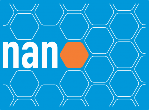Banca de DEFESA: PRISCILA SABBAG FERREIRA
Uma banca de DEFESA de MESTRADO foi cadastrada pelo programa.STUDENT : PRISCILA SABBAG FERREIRA
DATE: 22/08/2023
TIME: 09:00
LOCAL: Banca a ser realizada no campus de Santo André
TITLE:
STUDY OF CHOLESTEROL PRESENCE IN MONOLAYERS OF DIPALMITOYLPHOSPHATIDYLCHOLINE AND INTERACTION OF PROTEINS RELATED TO SARS-CoV-2
PAGES: 80
BIG AREA: Ciências Exatas e da Terra
AREA: Química
SUBÁREA: Físico-Química
SPECIALTY: Química de Interfaces
SUMMARY:
Cholesterol is an essential sterol in cell membranes that can regulate the organization and fluidity of biological membranes. This biomolecule has been identified as one of the critical factors in the process of internalizing various viruses in the human body. Therefore, understanding these viral mechanisms is relevant for a deeper comprehension of these viral pathogenicities in the search for practical therapeutic approaches against viral diseases. The biochemical and biophysical processes related to these diseases are highly complex; thus, studying model systems capable of mimicking the interaction between lipid membranes modeled with cholesterol and proteins has proven fundamental. Recent studies show that patients infected by SARS-CoV-2 exhibited high cholesterol levels in their organisms (ZAKI; ALASHWAL; IBRAHIM, 2020). In this work, we propose to study structural and elastic changes in lipid systems, both bi- and tri-dimensional, composed of dipalmitoylphosphatidylcholine (DPPC) in the presence of different quantities of cholesterol (SUBCZYNSKI; PASENKIEWICZ-GIERULA; WIDOMSKA; MAINALI et al., 2017) in the presence and absence of Spike proteins and the receptor-binding domain (RBD). To characterize these systems, we used the techniques of Langmuir trough, atomic force microscopy (AFM), small-angle X-ray scattering (SAXS), and electrochemical methods. We observed that cholesterol in DPPC monolayers promotes local alteration, inducing the formation of more rigid membrane regions. All the results obtained in this work led us to conclude that lipid membranes rich in cholesterol promote an increase in the investigation of proteins in the membrane, mainly the Spike protein. With the interpretation of all the results obtained in this work, it was possible to propose a structural model of the membrane in the presence of cholesterol and the interaction of the Spike and RBD proteins. The behavior of the adsorption isotherm and SAXS data demonstrated that the presence of cholesterol in the membrane plays an essential role in allowing SARS-CoV-2 proteins to be allocated in lipid systems. It was observed that increasing the amount of cholesterol in the membranes contributes to better adhesion of the proteins in the mono/bilayers, indicating that these proteins prefer to incorporate themselves in such systems in cholesterol-rich regions.
COMMITTEE MEMBERS:
Presidente - Interno ao Programa - 1544341 - WENDEL ANDRADE ALVES
Membro Titular - Examinador(a) Interno ao Programa - 1734908 - FABIO FURLAN FERREIRA
Membro Titular - Examinador(a) Externo à Instituição - LUCIANO CASELI - UNIFESP
Membro Suplente - Examinador(a) Interno ao Programa - 2605463 - JOSE ANTONIO SOUZA
Membro Suplente - Examinador(a) Externo à Instituição - DENISE FREITAS SIQUEIRA PETRI - USP




